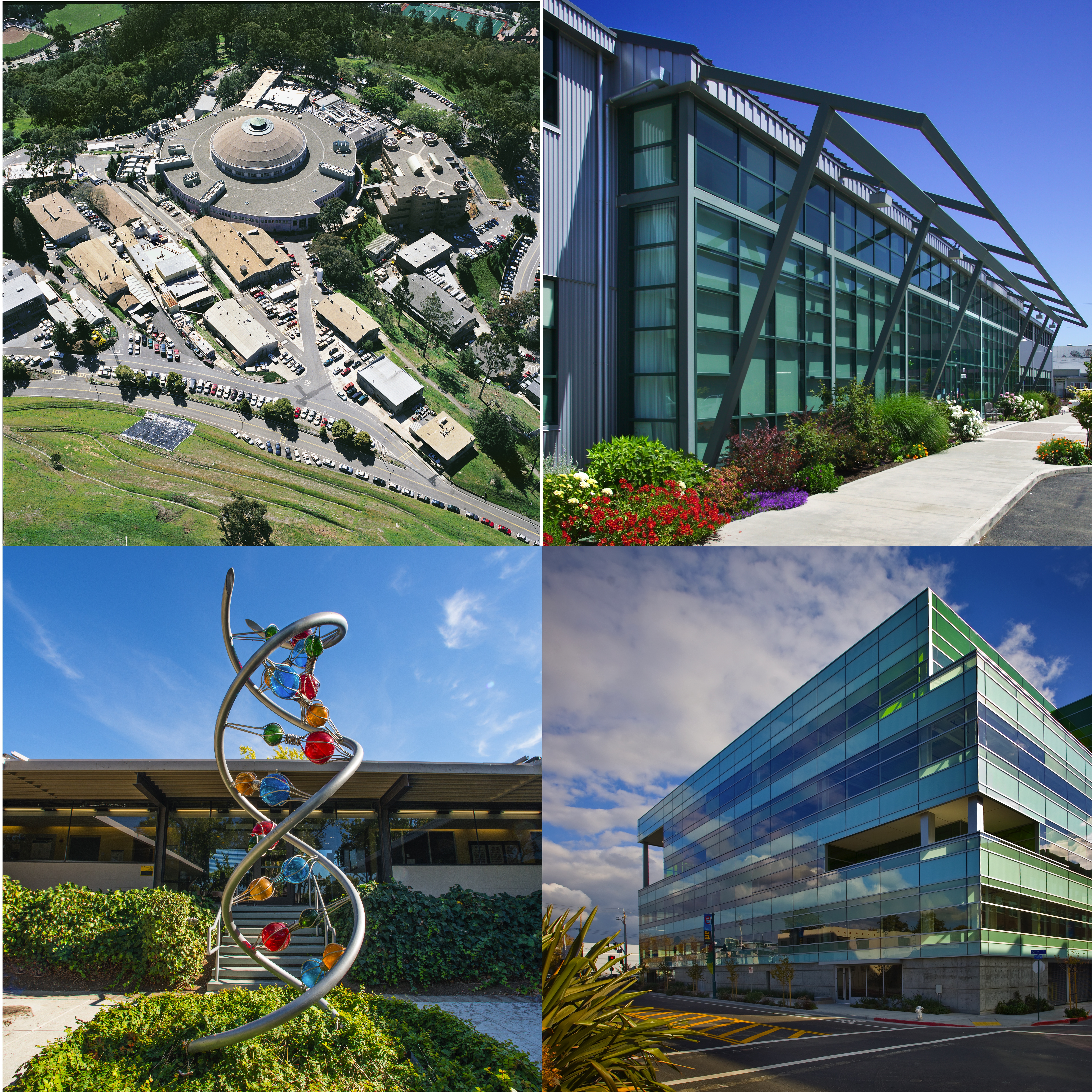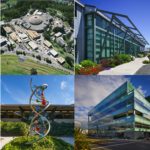 The projects of 13 Biosciences Area scientists and engineers received funding through the FY18 Laboratory Directed Research and Development (LDRD) program. These projects span a diverse array of topics and approaches including the study of microbiomes in relation to patterns of mutualism, crop productivity, and gut health; synthetic biology for engineering biosurfactant production and energy conversion pathways; and the application of technologies such as machine learning, high-resolution optical microscopy, and single-cell transcriptomics. Together, these efforts account for 18.75 percent of the $20 million allocated. Lab-wide, 74 projects were selected from a field of 215.
The projects of 13 Biosciences Area scientists and engineers received funding through the FY18 Laboratory Directed Research and Development (LDRD) program. These projects span a diverse array of topics and approaches including the study of microbiomes in relation to patterns of mutualism, crop productivity, and gut health; synthetic biology for engineering biosurfactant production and energy conversion pathways; and the application of technologies such as machine learning, high-resolution optical microscopy, and single-cell transcriptomics. Together, these efforts account for 18.75 percent of the $20 million allocated. Lab-wide, 74 projects were selected from a field of 215.
This year, a new Early Career Development (ECD) funding track was introduced. Open to candidates no more than five years removed from their PhD, the intent is to provide these individuals a “financial runway” to work on ideas that they can turn into proposals for DOE funding. 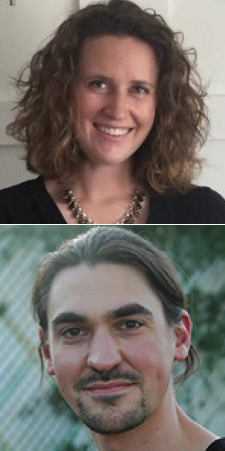 From the DOE Joint Genome Institute (JGI), Metagenome Program lead Emiley Eloe-Fadrosh (right, top) and research scientist Simon Roux (right, bottom) received awards via this track. Eloe-Fadrosh’s project will harness microbiome data to uncover patterns of microbial mutualism. Roux’s project will examine high-throughput resolution viral-host linkages.
From the DOE Joint Genome Institute (JGI), Metagenome Program lead Emiley Eloe-Fadrosh (right, top) and research scientist Simon Roux (right, bottom) received awards via this track. Eloe-Fadrosh’s project will harness microbiome data to uncover patterns of microbial mutualism. Roux’s project will examine high-throughput resolution viral-host linkages.
 From the Environmental Genomics and Systems Biology (EGSB) Division, staff scientist Ben Brown (left) received funding for a new endeavor to deploy machine learning to engineer agriculture, a focus area of a “smart farm” project in Arkansas.
From the Environmental Genomics and Systems Biology (EGSB) Division, staff scientist Ben Brown (left) received funding for a new endeavor to deploy machine learning to engineer agriculture, a focus area of a “smart farm” project in Arkansas.  The award is part of the Machine Learning for Science Lab-wide initiative, which aims to surmount the hurdles of next generation computational speed and analytical techniques from programming, statistical, and mathematical methods. Four ongoing projects also received funding: research scientist Diane Dickel’s (right, top) use of single-cell transcriptomics to deconvolute tissue heterogeneity; division director Louise Glass’s (left, top) dissection of regulatory and
The award is part of the Machine Learning for Science Lab-wide initiative, which aims to surmount the hurdles of next generation computational speed and analytical techniques from programming, statistical, and mathematical methods. Four ongoing projects also received funding: research scientist Diane Dickel’s (right, top) use of single-cell transcriptomics to deconvolute tissue heterogeneity; division director Louise Glass’s (left, top) dissection of regulatory and 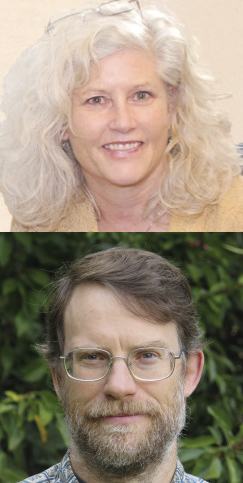 metabolic networks of filamentous fungi involved in carbon cycling; senior scientist Trent Northen’s (right, bottom) effort to uncover the genetic basis of a beneficial microbiome to improve crop productivity using fabricated ecosystems (EcoFABs); and division science co-deputy John Vogel’s (left, bottom) exploration of the signaling and mechanisms of plant-growth promoting microbes.
metabolic networks of filamentous fungi involved in carbon cycling; senior scientist Trent Northen’s (right, bottom) effort to uncover the genetic basis of a beneficial microbiome to improve crop productivity using fabricated ecosystems (EcoFABs); and division science co-deputy John Vogel’s (left, bottom) exploration of the signaling and mechanisms of plant-growth promoting microbes.
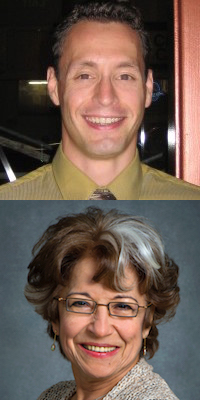 From the Biological Systems and Engineering (BSE) Division, research scientist Kristofer Bouchard (right, top) received funding to launch an effort to reveal the organization and dynamics of the sensorimotor cortex by mapping structure to function across micro-to-mesoscales. Three ongoing projects also received funding: distinguished scientist Mina Bissell’s (right, bottom) identification of
From the Biological Systems and Engineering (BSE) Division, research scientist Kristofer Bouchard (right, top) received funding to launch an effort to reveal the organization and dynamics of the sensorimotor cortex by mapping structure to function across micro-to-mesoscales. Three ongoing projects also received funding: distinguished scientist Mina Bissell’s (right, bottom) identification of 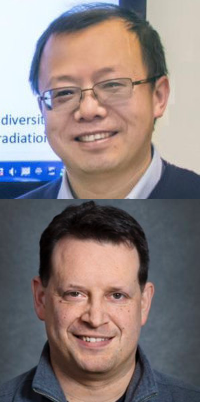 bioactive compounds across the tree of life from bacteria, to plants, to human organoids; senior scientist Jian-Hua Mao’s (left, top) investigation of the impact of the gut microbiome on genetic susceptibility to chemically induced colon cancer; and senior scientist Steve Singer’s (left, bottom) engineering of microbial one-carbon conversion for biosurfactant production.
bioactive compounds across the tree of life from bacteria, to plants, to human organoids; senior scientist Jian-Hua Mao’s (left, top) investigation of the impact of the gut microbiome on genetic susceptibility to chemically induced colon cancer; and senior scientist Steve Singer’s (left, bottom) engineering of microbial one-carbon conversion for biosurfactant production.
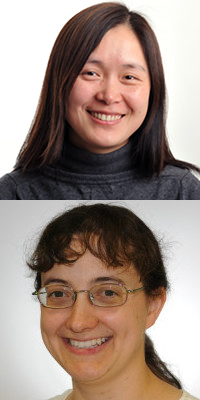 From the Molecular Biophysics and Integrated Bioimaging (MBIB) Division, faculty scientist Na Ji (right, top) received funding to commence work developing high-resolution optical microscopy methods for imaging plants and microbes. And one ongoing project, staff scientist Karen Davies’s (right, bottom) designing of efficient energy conversion pathways for synthetic organisms, also received funding.
From the Molecular Biophysics and Integrated Bioimaging (MBIB) Division, faculty scientist Na Ji (right, top) received funding to commence work developing high-resolution optical microscopy methods for imaging plants and microbes. And one ongoing project, staff scientist Karen Davies’s (right, bottom) designing of efficient energy conversion pathways for synthetic organisms, also received funding.

